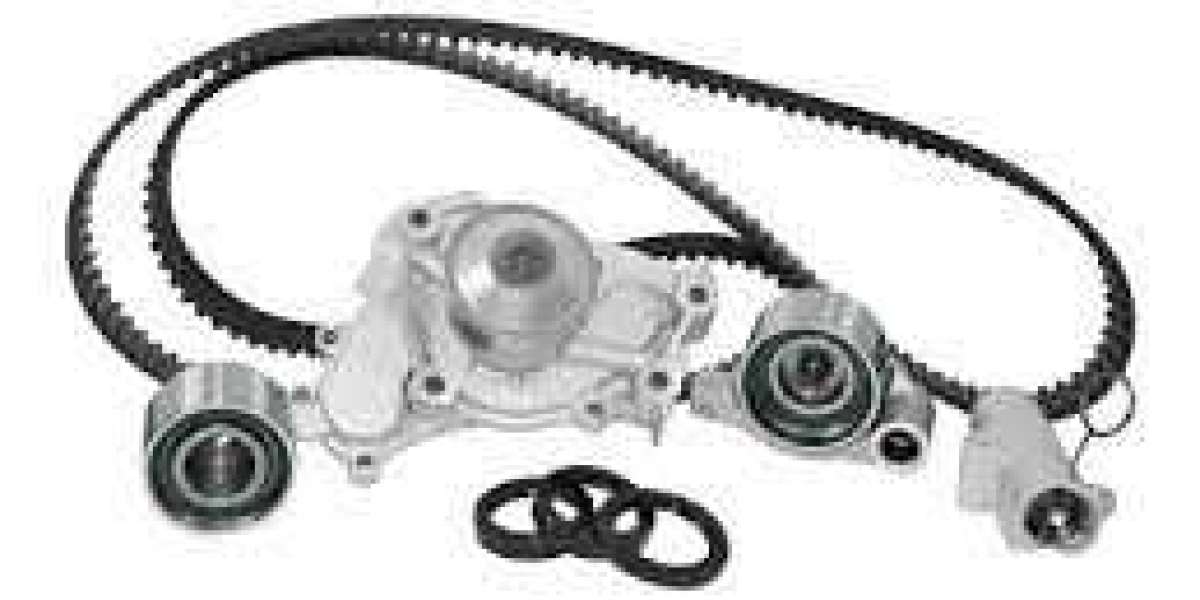Most drivers overlook the importance of timing components until it’s too late. Timing belt kits are vital in synchronizing the crankshaft and camshaft, ensuring the engine’s valves open and close at the right time. When this delicate synchronization is disrupted due to belt wear, misalignment, or tensioner failure, it can lead to catastrophic engine damage.
This article explores the dangers of neglected timing belt kits, symptoms of failure, preventive maintenance, and why replacing them on time can save you thousands in repair bills.
Why Timing Belt Kits Are Essential
Timing belts coordinate the engine’s most crucial movements. Without them, pistons and valves would collide, causing severe internal damage. A complete kit includes:
The timing belt itself
Tensioners and pulleys
Sometimes a water pump, depending on the vehicle design
By distributing stress across multiple components, a full kit replacement ensures long-lasting performance and avoids premature failure.
Common Problems with Timing Belt Kits
Even high-quality belts eventually wear down. Below are common causes of failure:
1. Belt Wear and Cracking
Age, heat, and constant tension cause cracks and fraying, weakening the belt’s integrity.
2. Tensioner Malfunction
A faulty tensioner leads to slack, making the belt slip or skip teeth.
3. Pulley Wear
Worn pulleys increase friction and stress, cutting the belt’s lifespan short.
4. Oil and Coolant Leaks
Fluid leaks soften and degrade the belt material, leading to sudden breakage.
5. Improper Installation
Incorrect torque on pulleys or poor alignment can cause early failures.
Warning Signs of a Failing Timing Belt
Unlike other components, timing belts often fail without much warning. Still, some red flags include:
Engine misfires or rough idling
Ticking or rattling noises from the engine bay
Difficulty starting the vehicle
Visible cracks or wear during inspection
Loss of power and acceleration
Ignoring these early signals increases the risk of severe damage.
Risks of Ignoring Timing Belt Failure
A broken timing belt is one of the costliest car issues because it often damages internal engine parts. Risks include:
Bent valves and damaged pistons due to collisions
Seized camshaft or crankshaft from misalignment
Broken water pump leading to overheating
Complete engine failure requiring full rebuild or replacement
What could have been a relatively affordable replacement turns into a multi-thousand-dollar repair.
Recommended Replacement Intervals
Most manufacturers recommend replacing timing belts every 60,000 to 100,000 miles. However, driving conditions also matter. Vehicles in hotter climates, frequent stop-and-go traffic, or heavy towing should replace belts sooner.
Replacing the entire kit, not just the belt, ensures all supporting parts are new and reduces future risks.
Preventive Maintenance for Timing Belt Kits
Staying proactive can add years to your engine’s life:
Replace the full kit – Never just swap the belt; always replace tensioners, pulleys, and water pump if included.
Inspect regularly – Check for cracks, fraying, or leaks during oil changes.
Fix leaks quickly – Oil and coolant leaks can destroy a belt faster than normal wear.
Use OEM-quality parts – Cheap belts or pulleys don’t provide reliable performance.
Trust professionals – Proper alignment and torque specs are critical for long-term durability.
Why Choose High-Quality Timing Belt Kits
Choosing premium kits ensures:
Longer service life under high-stress conditions
Reduced risk of sudden failures
Proper synchronization and performance
Warranty protection for peace of mind
Reliable brands save you money in the long run compared to low-cost aftermarket alternatives.
DIY vs. Professional Replacement
DIY Replacement
Suitable for skilled mechanics with tools and knowledge
Saves on labor costs
High risk of errors if tensioning or alignment is off
Professional Replacement
Guaranteed proper installation
Warranty on parts and labor
Identifies other issues like leaks or pulley wear
Since timing belts are complex, professional service is recommended for most drivers.
Cost of Replacement vs. Engine Damage
Timing belt replacement typically costs between $500–$1,000, depending on the vehicle. But if the belt breaks, repairs can exceed $3,000–$6,000 due to valve and piston damage. The cost difference makes preventive replacement an easy choice.
The Role of Timing Belt Kits in Vehicle Reliability
When timing belt kits function properly, they provide:
Smooth engine performance
Consistent power delivery
Better fuel economy
Reduced emissions
Peace of mind on long drives
They are truly the backbone of engine synchronization and efficiency.
Conclusion
Timing belts may be small, but their failure can bring your vehicle to a standstill. By replacing them on schedule, inspecting supporting components, and using genuine parts, you protect both performance and safety.
For lasting reliability, always invest in complete timing belt kits rather than replacing single parts. It’s a small investment compared to the massive cost of engine damage.







